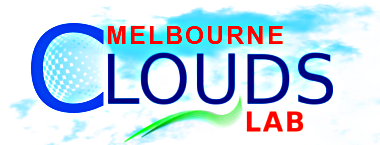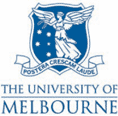Fog and Edge Computing Initiative
Introduction
The Internet of Things (IoT) paradigm promises to make "things" such as physical objects with sensing capabilities and/or attached with tags, mobile objects such as smart phones and vehicles, consumer electronic devices and home appliances such as fridge, television, healthcare devices, as part of the Internet environment. In cloud-centric IoT applications, the sensor data from these “things” is extracted, accumulated and processed at the public/private clouds, leading to significant latencies. Fog computing addresses this issue in developing real-time IoT applications, by mainly utilizing proximity based computational resources across the IoT layers such as gateways, cloudlets and network switches/routers. Similar approach of utilizing proximity resources in telecommunication domain is the Mobile Edge computing. Recently, there is also significant discussion in the similar lines with other approaches such as Mist computing and Dew computing.
To realize the full potential of Fog computing and similar paradigms, researchers and practitioners need to address several challenges and develop suitable conceptual and technological solutions for tackling them. These include development of scalable architectures, moving from closed systems to open systems, dealing with privacy and ethical issues involved in data sensing, storage, processing, and actions, designing interaction protocols, and autonomic management.
CLOUDS Lab at Melbourne is actively working on developing tools and technologies for Fog Computing. They include a Simulator (iFogSim), applications combining IoT, mobile, and clouds in areas such as healthcare, creating Fog environment using IoT devices, Fog devices (Raspberry pi) and enterprise/public clouds.
Related Projects
iFogSim
iFogSim enables modelling and simulation of Fog computing environments for evaluation of resource management and scheduling policies across edge and cloud resources under different scenarios. The simulator supports evaluation of resource management policies focusing on their impact on latency (timeliness), energy consumption, network congestion and operational costs. It simulates edge devices, cloud data centers, and network links to measure performance metrics. The major application model supported by iFogSim is the Sense-Process-Actuate model. In such models, sensors publish data to IoT networks, applications running on Fog devices subscribe to and process data coming from sensors, and finally insights obtained are translated to actions forwarded to actuators.
Download iFogSim here. More information can be found in our SPE paper.
Fogbus
Book
: Fog and Edge Computing: Principles and ParadigmsConference
: ICFEC 2021 in MelbourneProject Team Members
Active Members:
- Rajkumar Buyya
- MD Redowan Mahmud
- Mohammad Goudarzi
- Samodha Pallewatta
- Qifan Deng
Former Members and Collaborators:
- Harshit Gupta (now at GeorgiaTech)
- Amir Vahid
- Satish Srirama
- Rao Kotagiri
- Mohammad Shojafar
Publications
- Harshit Gupta, Amir Vahid Dastjerdi , Soumya K. Ghosh, and Rajkumar Buyya, iFogSim: A Toolkit for Modeling and Simulation of Resource Management Techniques in Internet of Things, Edge and Fog Computing Environments, Software: Practice and Experience (SPE), Volume 47, Issue 9, Pages: 1275-1296, ISSN: 0038-0644, Wiley Press, New York, USA, September 2017.
- Amir Vahid Dastjerdi and Rajkumar Buyya, Fog Computing: Helping the Internet of Things Realize its Potential, IEEE Computer, Volume 49, Issue 8, Pages: 40-44, ISSN: 0018-9162, IEEE CS Press, USA, August 2016.
- Chii Chang, Satish Narayana Srirama, and Rajkumar Buyya, Indie Fog: An Efficient Fog-Computing Infrastructure for the Internet of Things, IEEE Computer, Volume 50, Issue 9, Pages: 40-46, ISSN: 0018-9162, IEEE CS Press, USA, September 2017.
- Amir Vahid Dastjerdi, Harshit Gupta, Rodrigo N. Calheiros, Soumya K. Ghosh, and Rajkumar Buyya, Fog Computing: Principles, Architectures, and Applications, Internet of Things: Principles and Paradigms, R. Buyya and A. Dastjerdi (eds), Morgan Kaufmann, ISBN: 978-0-12-805395-9, Burlington, Massachusetts, USA, May 2016.
- Harshit Gupta, Sandip Chakraborty, Soumya K. Ghosh, and Rajkumar Buyya, Fog Computing in 5G Networks: An Application Perspective, Cloud and Fog Computing in 5G Mobile Networks, E. Markakis, G. Mastorakis, C. Mavromoustakis, E. Pallis (eds.). ISBN: 978-1-78561-083-7, IET (Institution of Engineering and Technology) Press, Hertfordshire, UK, 2017.
- Redowan Mahmud and Rajkumar Buyya, Fog computing: A taxonomy, survey and future directions. Internet of everything. Springer, Singapore, 2018. 103-130.
- Luiz F. Bittencourt, Javier Diaz-Montes, Rajkumar Buyya, Omer F. Rana, and Manish Parashar, Mobility-aware Application Scheduling in Fog Computing, IEEE Cloud Computing, Volume 4, No. 2, Pages: 34-43, ISSN: 2325-6095, IEEE Computer Society Press, USA, March-April 2017.
- Paola G. Vinueza Naranjo, Zahra Pooranian, Mohammad Shojafar, Mauro Conti, and Rajkumar Buyya, FOCAN: A Fog-supported smart city network architecture for management of applications in the Internet of Everything environments, Journal of Parallel and Distributed Computing, 132, pp.274-283.
- Redowan Mahmud, Fernando Luiz Koch, and Rajkumar Buyya, Cloud-Fog Interoperability in IoT-enabled Healthcare Solutions, Proceedings of the 19th International Conference on Distributed Computing and Networking (ICDCN 2018, ISBN 978-1-4503-6372-3, ACM Press, USA), Varanasi, India, January 4-7, 2018.
- Redowan Mahmud, Kotagiri Ramamohanarao, and Rajkumar Buyya, Latency-aware Application Module Management for Fog Computing Environments, ACM Transactions on Internet Technology (TOIT), Volume 19, No. 1, Article 9, Pages: 1-21, ISSN:1533-5399, ACM Press, New York, USA, March 2019.
- Redowan Mahmud, Satish Narayana Srirama, Ramamohanarao Kotagiri, and Rajkumar Buyya, Quality of Experience (QoE)-aware Placement of Applications in Fog Computing Environments, Journal of Parallel and Distributed Computing (JPDC), Volume 132, Pages: 190-203, ISSN: 0743-7315, Elsevier Press, Amsterdam, The Netherlands, October 2019.
- Redowan Mahmud and Rajkumar Buyya, Modelling and Simulation of Fog and Edge Computing Environments using iFogSim Toolkit, Fog and Edge Computing: Principles and Paradigms, R. Buyya and S. Srirama (eds), 433-466pp, ISBN: 978-111-95-2498-4, Wiley Press, New York, USA, January 2019.
- Shreshth Tuli, Redowan Mahmud, Shikhar Tuli, and Rajkumar Buyya, FogBus: A Blockchain-based Lightweight Framework for Edge and Fog Computing, Journal of Systems and Software (JSS), Volume 154, Pages: 22-36, ISSN: 0164-1212, Elsevier Press, Amsterdam, The Netherlands, August 2019.
- Adel Nadjaran Toosi, Redowan Mahmud, Qinghua Chi, and Rajkumar Buyya, Management and Orchestration of Network Slices in 5G, Fog, Edge and Clouds, Fog and Edge Computing: Principles and Paradigms, R. Buyya and S. Srirama (eds), 79-102pp, ISBN: 978-111-95-2498-4, Wiley Press, New York, USA, January 2019.
- Redowan Mahmud, Adel Nadjaran Toosi, Ramamohanarao Kotagiri. and Rajkumar Buyya, Context-aware placement of industry 4.0 applications in fog computing environments, IEEE Transactions on Industrial Informatics, (in press, accepted on Nov. 5, 2019).
- Redowan Mahmud, Ramamohanarao Kotagiri, and Rajkumar Buyya, Edge Affinity-based Management of Applications in Fog Computing Environments, Proceedings of the 12th IEEE/ACM International Conference on Utility and Cloud Computing (UCC 2019, IEEE CS Press, USA), Auckland, New Zealand, Dec. 2-5, 2019..
- Mohammad Goudarzi, Marimuthu Palaniswami, and Rajkumar Buyya, A Fog-driven Dynamic Resource Allocation Technique in Ultra Dense Femtocell Networks, Journal of Network and Computer Applications (JNCA), Volume 145, Pages: ??, ISSN: 1084-8045, Elsevier, Amsterdam, The Netherlands, November 2019.
- Samodha Pallewatta, Vassilis Kostakos, and Rajkumar Buyya, Microservices-based IoT Application Placement within Heterogeneous and Resource Constrained Fog Computing Environments, Proceedings of the 12th IEEE/ACM International Conference on Utility and Cloud Computing (UCC 2019, IEEE CS Press, USA), Auckland, New Zealand, Dec. 2-5, 2019.
- Redowan Mahmud, Satish Narayana Srirama, Ramamohanarao Kotagiri, and Rajkumar Buyya, Profit-aware application placement for integrated Fog–Cloud computing environments, Journal of Parallel and Distributed Computing (JPDC), Volume 135, Pages:177-190, 2020.
- Redowan Mahmud, Kotagiri Ramamohanarao, and Rajkumar Buyya, Application Management in Fog Computing Environments: A Taxonomy, Review and Future Directions, ACM Computing Surveys, Volume ?, No. ?, Article No. ??, Pages: ??, ISSN 0360-0300, ACM Press, New York, USA (in press, accepted on May 18, 2020).
- Mohammad Goudarzi, Huaming Wu, Marimuthu Palaniswami, and Rajkumar Buyya, An Application Placement Technique for Concurrent IoT Applications in Edge and Fog Computing Environments, IEEE Transactions on Mobile Computing (TMC), Volume ?, Number ?, Pages: ??, ISSN: 1536-1233, IEEE Computer Society Press, USA (in press, accepted on Jan 11, 2020).





